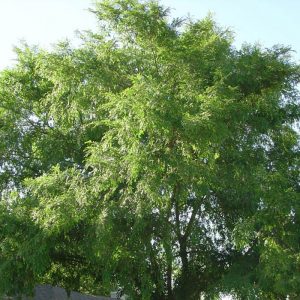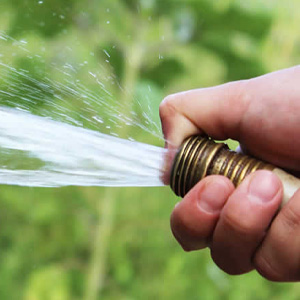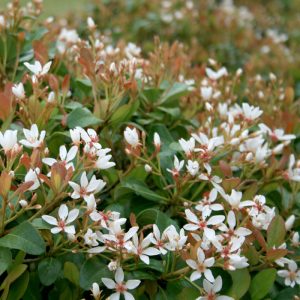Trees love the spring season. Redbud, Cherry Laurel, Chickasaw Plum, Citrus, and fruit trees are all in bloom. Deciduous trees like Crape Myrtles and Maples are leafing out, as are the Drake and Alee Elms. Oaks are beginning to put on their new flush of growth and Magnolias will begin budding up for their signature giant sized fragrant flowers. It is quite normal now for Oaks to be dropping leaves. These evergreen natives go through a very quick, partial leaf drop in spring before they flush with new growth.

VerdeGo offers a large selection of trees. When selecting your tree, you must consider important factors like the amount of sun or shade your area gets and the amount of growing space the tree will have. One of the most important considerations- what do you want the tree to provide for you? Whether it’s a tree for shade, an evergreen to provide screening and privacy or a tree that provides colorful flowers, there are many to choose from to get the perfect selection for your garden! Always look up for overhead wires when choosing a site as well.
Don’t Let Your Trees Die!
Newly planted trees and shrubs can take 3 months to 2 years to root in and establish, depending on the size and variety when planted. Larger trees and shrubs need deep watering to help roots penetrate into the soil. If you had a 30-gal tree planted the root ball itself is 2.5 feet deep. You must make sure that enough water has been applied to reach down 3 feet to ensure rooting. Daily hand watering for 2 weeks, then every other day hand watering for 2 the next two weeks and then twice weekly hand watering for the next 2 months should allow for good rooting and healthy growth. Because no two planting sites are exactly alike common sense must also be used. If after watering a few days your site seems a little wet and the ground is mushy, skip a day or two, to allow it to dry a little. TOO much water will rot the roots.

On the other hand, if your site is out in the hot blazing sun and high and dry you may need a little extra water. One thing for sure, a sprinkler system alone will NOT provide enough water for larger material to root in. After your irrigation cycle has watered if you were to dig down you would find that only the top 2-6 inches of soil is moist and that amount will not provide adequate water for a newly planted tree or shrub. Roots have tiny root hairs that stem from the main root. When the roots do not receive enough water the first thing that dies off are the tiny root hairs that take up the water to the main root that transports water throughout the tree. When this happens, the tree or plant is set back until the plant can recover and re-grow root hairs – if it gets adequate water to do so. If the plant is set back again before it has recovered, it normally dies, the top half first, because it is the furthest point to receive water. Mulching your new plantings is essential to retain moisture, conserve water and reduce weeds. There is a watering guide available at the Garden Center if you require more information.
Trimming and Transplanting
Prune spring flowering plants like Camellias, Azaleas, Spirea and Indian Hawthorn after they have finished flowering. Camellias should not be trimmed any more after the spring and azaleas can be trimmed up to about July then very little as these plants set their buds for the following year very early.

If you need to divide or move plants- now is the perfect time to do so. Larger plants or trees should be “root trimmed” prior to moving. Use a sharp shovel to dig a circle around the plants just to break through the roots. Plan on doing this about a week to ten days prior to moving it. Doing this will allow the small root hairs to regenerate a little prior to being relocated. Having the area where the transplant is going ready PRIOR to moving it is crucial for success. When replanting, ensure the plant is planted at the same depth as previously planted- at or above ground level. WATER, WATER, WATER after transplanting is extremely important. Do not fertilize right away- wait 4 to 6 weeks after replanting.